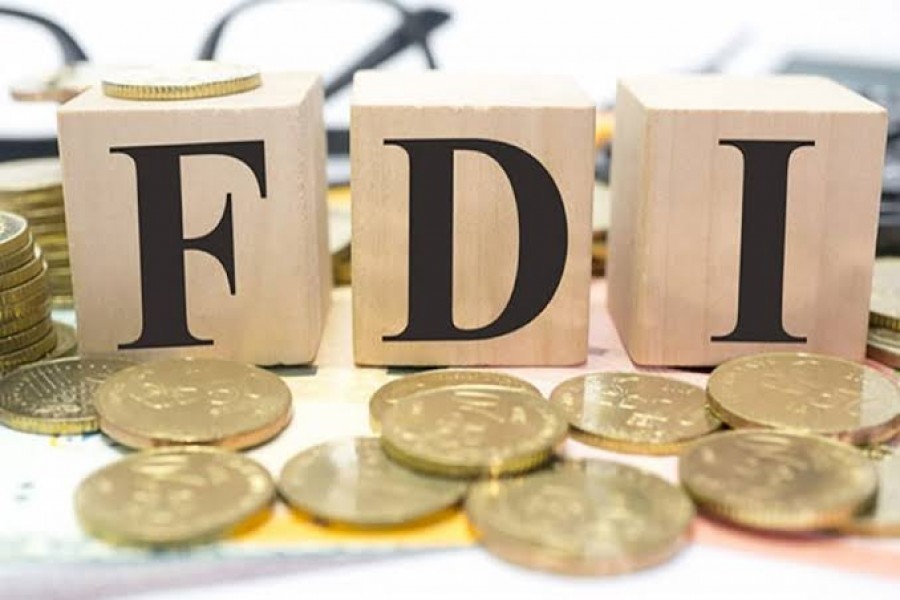When Finance Minister AHM Mustafa Kamal while unveiling the national budget for the next fiscal year (FY '23) in parliament on June 09, laid emphasis on many issues. Attracting more foreign direct investment (FDI) was one of those.
"Our goal will be to build improved communications, necessary infrastructure and ensure power and energy security through increased public, private and foreign investment," he said.
On the same day, United Nations Conference on Trade and Development (UNCTAD) released The World Investment Report (WIR) 2022. The annual flagship report depicted the status of inflows and outflows of FDI and relevant policies and measures taken to that end by different countries in 2021. The report showed that the inflow of global FDI recovered to pre-pandemic levels in 2021, reaching nearly $1.6 trillion by registering 64 per cent increase from $0.97 trillion ($ 963.2 billion, to be exact) in 2020. On the other hand, the pandemic dipped the global FDI flow two years back by 35 per cent from $1.48 trillion in 2019.
In line with the global trend, the inflow of FDI in Bangladesh increased by around 13 per cent last year to $2.89 billion from $2.56 billion in 2020. Thus, the net inflow of FDI rebounded to the pre-pandemic level in 2019. The country received $2.87 billion in FDI two years back. Nevertheless, the inflow of FDI in 2021 was around 20 per cent less than a record volume -- $3.61 billion -- received in 2018. It means the country is still struggling to attract expected volume of FDI, which has also been indirectly acknowledged by the finance minister in the budget speech when he said: "We need more foreign investment to continue our growth." Though he did not mention anything about the current trend of FDI, he discretely outlined the necessary conditions to attract FDI. These are business-friendly environment, including essential infrastructure and legal reforms, a vibrant industrial sector and rational tariff. He stated, "One of the key factors that work behind attracting the expected level of investment is the business-friendly environment". "The importance of industrial sector is immense in creating employment and attracting domestic and foreign investment", he added.
The country's FDI-GDP ratio also reflects the inadequacy of FDI. If a country regularly receives FDI that exceeds around 5.0 per cent of the Gross Domestic Product (GDP) annually, that is perceived as a success for the economy. Unfortunately, the FDI-GDP ratio for Bangladesh is relatively low. In 2013, it reached 1.73 per cent, an all-time high in the country's history. Since then, it has continued to decline, according to the estimate of the World Bank. In 2020, the FDI-GDP ratio came down to 0.35 per cent, while the external debt-GDP ratio stood at 19.60 per cent.
The government has no optimal annual target for gaining FDI. Earlier, the sixth and seventh five-year plan (FYP) documents set such targets. During the FY11-FY15 period, the average annual FDI inflow was $1.36 billion against the $1.23 billion average yearly inflow of FDI set in the 6FYP. The 7FYP set the annual average target at $6 billion. In reality, during FY16-FY20, the yearly average FDI was recorded at $2.66 billion. The 8FYP, however, skips any such projection as such target-setting or projection carries no meaning. Nevertheless, a tentative target may help measure the effectiveness of the policies, regulations and reforms to attract FDI.
Moreover, several new challenges to attract FDI in the post-Covid period have emerged, especially after the Russia-Ukraine war. In this connection, the UNCTAD report rightly mentioned that the business and investment climate has 'changed dramatically as the war in Ukraine results in a triple crisis of high food and fuel prices and tighter financing.' Risk of the pandemic resurgence, interest rate hikes in major economies to contain the upward inflation and a possible recession only worsen the global investment climate.
UNCTAD report also pointed out that investment by multinational entities (MNEs) in new projects aboard was 20 per cent below pre-pandemic levels last year. As a result, the volume of Greenfield investment in developing countries stayed flat. The trend of investment is already reflected in the preliminary estimate for the first quarter of the current year. During the period, the investment in the greenfield projects dropped by 21 per cent across the world. There was also a downtrend in cross-border merger and acquisition activity and international project finance deals. This gloomy outlook is also relevant to Bangladesh, aspiring to draw more FDI in the coming years.
Against this backdrop, Bangladesh needs to put more effort in the strategies outlined in the 8FYP and readjust the country's foreign investment and trade policies with the global trend. Furthermore, to make its graduation from the Least Developed Country (LDC) status successful and sustainable, Bangladesh needs more FDI part of which can be used for technology transfer and greater market access.
The just-concluded ministerial conference of the World Trade Organization (WTO) recognised that LDCs might face a series of difficulties in the post-graduation period due to erosion of trade preferences and support. The conference, however, did not agree to extend some benefits for a couple of years after graduation, as demanded by the LDCs. In this connection, a higher amount of FDI will be helpful for Bangladesh to offset the loss due to trade preference erosion after graduation in 2026.


